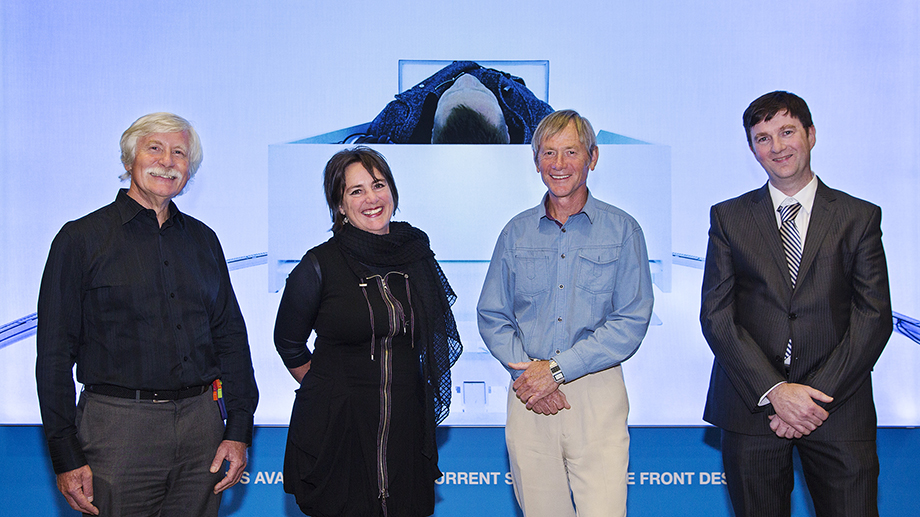ANU academics break down the science of perception
ANU scientist have used the James Turrell: A Retrospective exhibition at the National Gallery of Australia to help explain how people see the world.
The Turrell exhibition features works tracing almost five decades of the American artist's career from early light projections and holograms to immersive light installations that address perceptions and how people see.
Dr Mark Edwards, visual psychophysicist at the Research School of Psychology, said what we perceive does not always directly correspond to what is out there.
"The visual system is not like a camera. It doesn't take a snapshot it is actively engaged interpreting that visual scene," Dr Edwards said.
"When our brain interprets the outside world it mostly gets it right but sometimes it doesn't.
"Psycophysics is trying to work out the mechanisms involved in us perceiving the outside world."
Dr Edwards joined Professor Trevor Lamb, visual neuroscientist from The John Curtin School of Medical Research, and physicist Emeritus Professor Hans Bachor in a panel discussion about Turrell's works with exhibition curator Lucina Ward.
"Turrell is somewhat unique in terms of art. He has a strong interest in psychological perception and a lot of his artworks are based on the way that the visual system works," Dr Edwards said.
"Turrell is really good at tapping those perceptual constancies and sensory mechanisms to make his art more vivid and dynamic."
Ms Ward said the panel discussion was an opportunity to connect ANU expertise to those who wanted a great understanding of how they perceived the art.
"Turrell's background is both as a perceptual psychologist and mathematician, studying art came second for him," she said.
"People interested in Turrell's work cross a hugely wide range of disciplines and backgrounds so we saw a panel discussion as a good opportunity to draw together these related interests."
The exhibition runs until 8 June.

